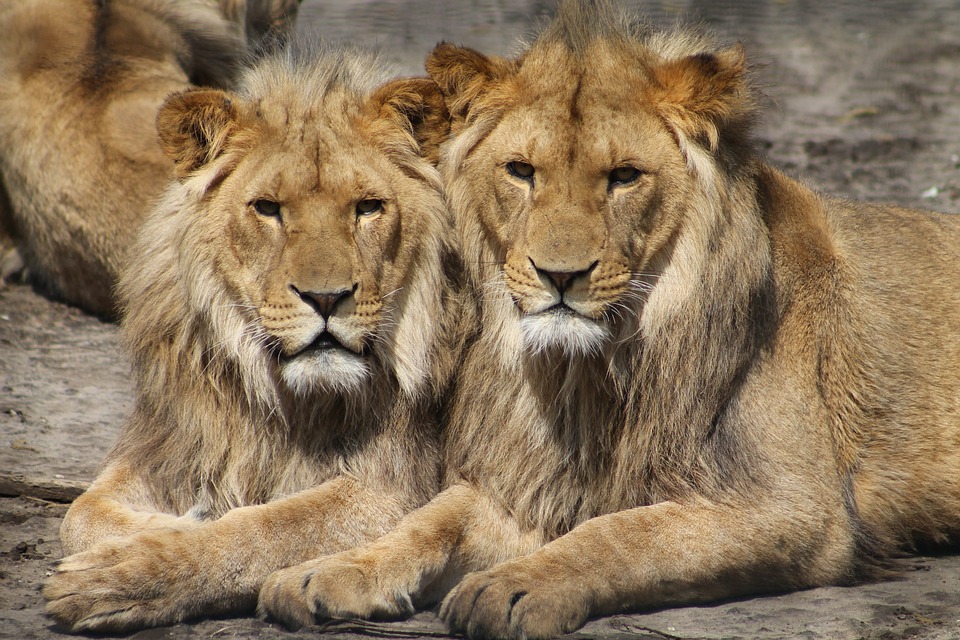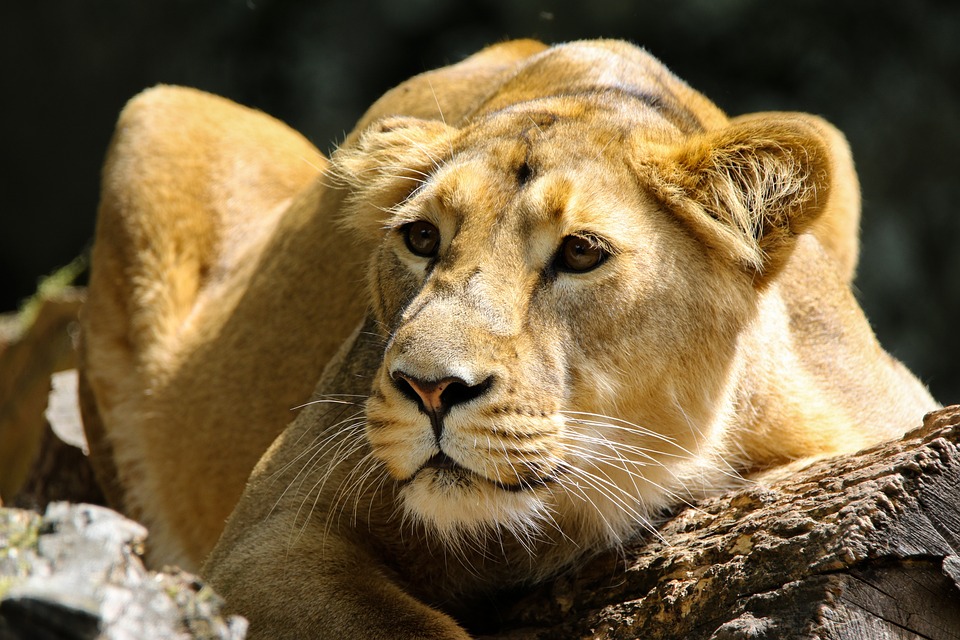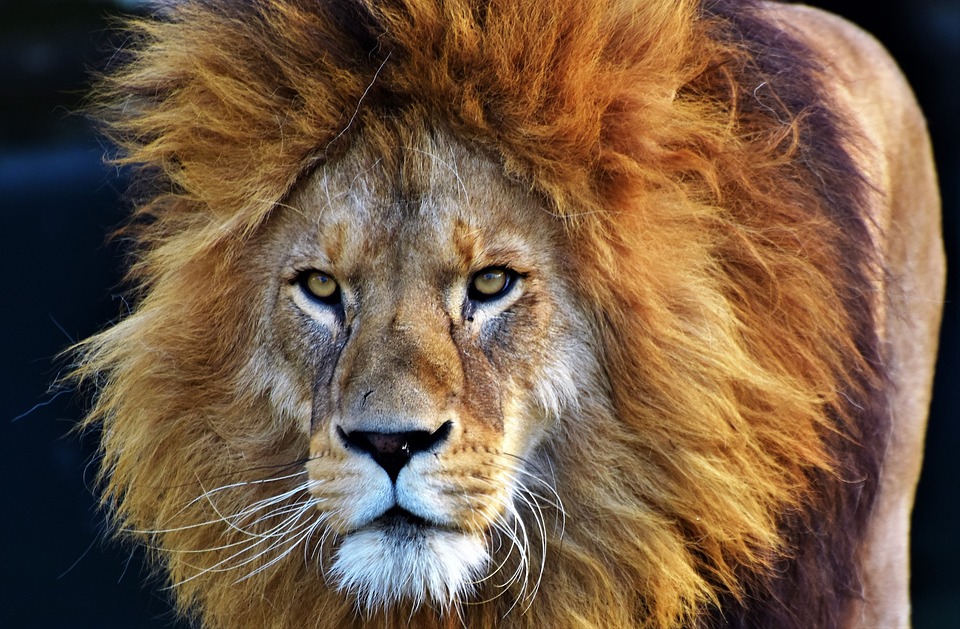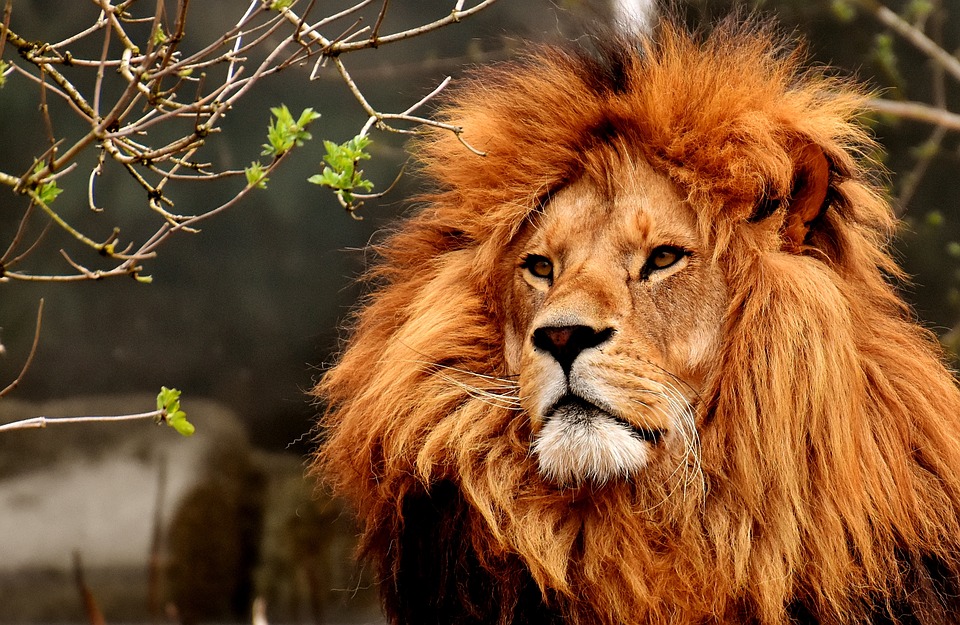Lions are large, majestic predatory mammals that are part of the big cat family, Felidae. They are native to sub-Saharan Africa and a small population of Asiatic lions is in India. Wildcats are the only social cats, living in groups called pride, consisting of related females and their young, as well as a few adult males. The lionesses are responsible for hunting for the pride, while the male lions defend the pride’s territory.
Lions are known for their distinctive appearance. They have a tawny coat of fur that varies in color from light to dark. The male wildcats have a large, impressive mane of hair around their necks, while females do not have a mane. Adult wildcats can weigh up to 550 pounds (250 kg) and measure up to 10 feet (3 meters) in length. This makes them the second-largest cats after tigers.
Lions are apex predators and are capable of taking down large prey, such as buffalo, zebras, and giraffes. They are also opportunistic hunters and will scavenge for food when necessary. Lions are mainly active at night and can sleep for up to 20 hours a day.
Lions are a popular symbol in many cultures and often represent strength, power, and courage. However, lions list as a vulnerable species due to habitat loss, hunting, and other threats. Conservation efforts are being made to protect lion populations and their habitats to ensure their survival for future generations.

Features
Lions are large, muscular predatory mammals with several distinctive features. Here are some of the key physical and behavioral characteristics of lions:
Mane: Male lions have a large, impressive mane of hair around their necks. They can range in color from light blonde to dark brown or black. The mane serves as a form of protection during fights with other males and can also be a signal of status and attractiveness to females.
Size: Lions are one of the largest species of big cats, with adult males weighing up to 550 pounds (250 kg) and measuring up to 10 feet (3 meters) in length from head to tail. Females are generally smaller, weighing between 265 and 395 pounds (120-180 kg).
Coat: Lions have a short, tawny coat of fur that varies in color from light to dark, with a lighter underbelly. Some lions may also have darker spots or streaks on their fur.
Teeth and Claws: Lions have powerful jaws and sharp teeth. They use for biting and tearing flesh. They also have retractable claws that can be up to 1.5 inches (4 cm) long. Wildcats use them for gripping and killing prey.
Social Behavior: Lions are the only social cats, living in groups called the pride of related females and their young, as well as a few adult males. The lionesses are responsible for hunting for the pride, while the male lions defend the pride’s territory.
Hunting: Lions are apex predators and are capable of taking down large prey, such as buffalo, zebras, and giraffes. They hunt primarily at night, using their keen senses of sight, hearing, and smell to track and ambush their prey.
Territorial: Lions are territorial animals and use scent markings to defend their territory from intruders. Male lions mark their territory by spraying urine and rubbing their scent glands on trees and rocks.
Maternal Behavior: Lionesses are very protective of their cubs and will fiercely defend them from predators. They also nurse their young for up to six months and continue to care for them for up to two years.
Adaptability: Lions are adaptable animals and can survive in a variety of habitats, from grasslands and savannas to forests and deserts. They can also survive for long periods without water, obtaining much of their moisture from their prey.
Endangered Status: Despite their size and strength, wildcats are considered a vulnerable species due to habitat loss, hunting, and other threats. According to the International Union for Conservation of Nature (IUCN), lion populations have declined by up to 43% over the past 21 years and are facing extinction in some regions of Africa.
Symbolism: Wildcats are often associated with power, courage, and strength in many cultures around the world. They are also commonly used as symbols of royalty, as seen in many coats of arms and national emblems.
Uniqueness of wildcats
Lions are unique animals with several distinct characteristics that set them apart from other big cats and wildlife in general. Here are some of the key aspects of the lion’s uniqueness:
Social Structure: Lions are the only big cats that live in groups, known as pride consisting of related females and they’re young, as well as a few adult males. This social structure is unique among cats and allows wildcats to hunt cooperatively and defend their territory more effectively.
Hunting Behavior: Lions are apex predators and are capable of taking down large prey, such as buffalo, zebras, and giraffes. They hunt primarily at night, using their keen senses of sight, hearing, and smell to track and ambush their prey. Lions are also opportunistic hunters and will scavenge for food when necessary.
Gender Roles: Within a pride, female lions are responsible for hunting and caring for the cubs. The male wildcats defend the territory and mate with the females. This division of labor is unique among big cats and allows for greater efficiency in resource acquisition and protection.
Appearance: Lions possess their distinctive tawny coats of fur, with adult males having a large, impressive mane of hair around their necks. This mane is unique to male wildcats. Furthermore, serves as a form of protection and a signal of status and attractiveness to females.
Roaring: Lions are familiar with loud, distinctive roar. The roaring sound travels up to 5 miles (8 km) away. This is a unique vocalization. The wildcats communicate with other wildcats and serve as a warning to potential predators or rivals.
Cultural Significance: Lions have played an important role in human culture for thousands of years. They represent power, courage, and royalty. They are featured in many works of art, literature, and mythology, and are often used as symbols of national identity and pride.

How many lions are there?
The lion population has declined significantly over the past century due to habitat loss, poaching, and other human activities. According to the International Union for Conservation of Nature (IUCN), the current global lion population estimates to be between 20,000 to 30,000 individuals. Moreover, the majority of wildcats live in sub-Saharan Africa.
However, lion populations are not evenly distributed throughout their range and are facing local extinctions in many areas. For example, the West African lion subspecies is considered critically endangered with fewer than 400 individuals remaining in the wild. Additionally, the lion population in East and Southern Africa has declined by up to 43% over the past 21 years due to various threats.
Conservation organizations and governments also make efforts to protect lions and their habitat. Moreover, steps to increase anti-poaching efforts, and promote sustainable land use practices to ensure the survival of this iconic species.

Lions – Conclusion
In conclusion, lions are majestic and powerful animals that have captured the human imagination for centuries. They are the only big cats that live in social groups and have specialized roles within their pride. Lions are apex predators that can take down large prey and are adaptable to a variety of habitats. They hold a distinctive appearance. In addition, including the impressive manes of male lions, and their loud, distinctive roar. However, wildcats are facing significant threats to their survival, including habitat loss, poaching, and other human activities. Conservation efforts are critical to ensuring the survival of this iconic species for future generations.
Vibrant Vaishnavi

Good 👍